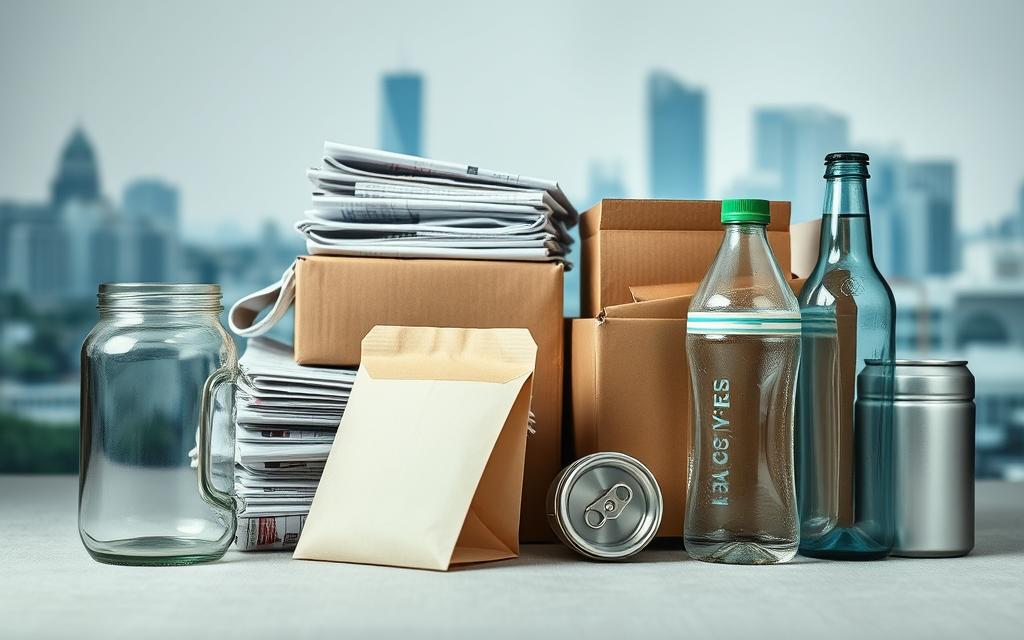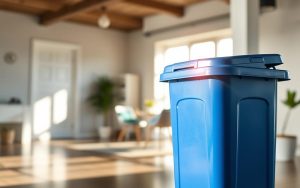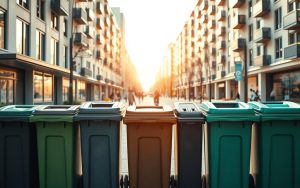Table of Contents
Recycling is a vital practice for environmental sustainability. It helps reduce waste, conserve resources, and protect our planet. Proper recycling ensures materials like plastic and paper are reused efficiently, extending their lifespan and minimizing landfill waste.
Contamination-free recycling is crucial. Dirty or non-recyclable items can disrupt the process. Follow these three basic rules: know your local guidelines, clean materials thoroughly, and avoid wishcycling. These steps ensure only suitable materials are processed.
Common recyclables include plastic bottles, clean paper, and glass jars. However, mistakes like tossing plastic bags or food-soaked containers can harm the system. Always double-check local recycling rules to make a positive impact.
For more detailed guidelines, visit California’s recycling resources. Proper practices not only benefit the environment but also support a cleaner, healthier future.
Understanding Recycling Basics
Transforming waste into reusable materials is a cornerstone of modern sustainability efforts. This process, known as recycling, helps conserve resources, reduce landfill dependency, and minimize environmental impact. By giving materials like metal and aluminum a second life, we can create a more sustainable future.
What is Recycling?
Recycling is the process of converting waste into new, usable products. It involves collecting, sorting, and processing materials like paper, plastic, and glass. This practice not only reduces the need for raw materials but also decreases energy consumption and greenhouse gas emissions.
Why Recycling Matters
Recycling offers significant environmental and economic benefits. It reduces resource extraction, lowers carbon footprints, and supports job creation in recycling industries. As WM’s partnership with Repreve demonstrates, sustainable materials can drive innovation and support domestic markets.
Three Basic Rules of Recycling
To ensure effective recycling, follow these three rules:
- Follow local program guidelines: Each community has specific rules. WM’s scalable programs for businesses are a great example of tailored solutions.
- Ensure items are clean, dry, and loose: Avoid placing materials in bags to prevent contamination.
- Avoid non-recyclables: Items like plastic bags and food-soaked containers can disrupt the process.
By adhering to these rules, you can contribute to a cleaner, healthier planet while supporting sustainable practices.
What Can Go in the Recycle Bin?
Effective recycling starts with understanding acceptable materials. Knowing which items are universally accepted and those requiring special handling ensures a smoother process. Let’s explore the basics and local considerations to make recycling more efficient.
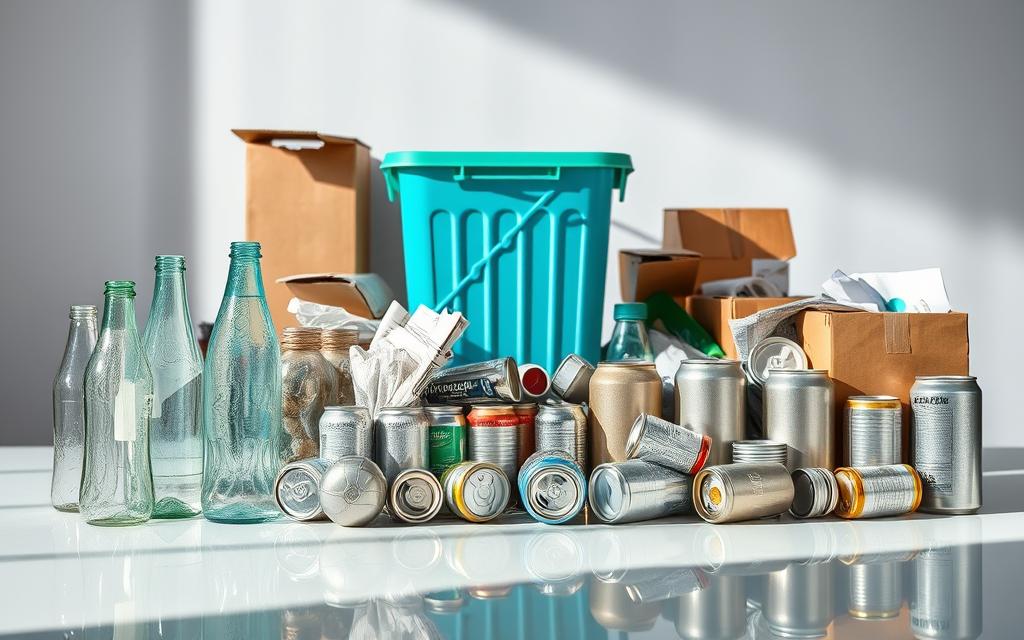
Common Recyclable Items
Certain materials are widely accepted in most recycling programs. These include:
- Plastic bottles and jugs: Look for #1 and #2 resin codes. These are commonly recycled.
- Aluminum and steel cans: Rinse thoroughly to remove residue.
- Clean paper and cardboard: Flatten boxes to save space.
- Glass bottles and jars: Check local guidelines for color requirements.
These items are staples in recycling programs and should always be included when properly prepared.
Special Considerations for Local Programs
Recycling rules vary by location. Some areas accept pizza boxes if they’re grease-free. Caps and lids are often allowed only if reattached to containers. Metal lids may need to be collected in crushed steel cans.
Always verify your local guidelines. For example, WM offers downloadable resources like their “What’s Recyclable” guide to help clarify rules for curbside and business programs. Staying informed ensures your efforts align with community standards.
What Should Not Go in the Recycle Bin
Knowing what to exclude from recycling is just as important as knowing what to include. Certain materials can disrupt the process, causing contamination or even shutting down facilities. By avoiding these items, you can help maintain an efficient and effective recycling system.
Non-Recyclable Items to Avoid
Some materials should never be placed in the recycling bin. Plastic bags, for example, can jam sorting machinery, leading to costly shutdowns. Instead, return them to grocery stores with designated collection points.
Food-contaminated containers, like greasy pizza boxes, are another common issue. The residue can spoil clean paper and cardboard, rendering them unusable. Always dispose of such items in the trash or compost them if possible.
Electronics and batteries require specialized handling. Many retailers offer take-back programs for these items, ensuring they are recycled safely. Avoid placing them in curbside bins to prevent hazards.
Common Contaminants in Recycling
Contamination is a major challenge in recycling. Food residue, for instance, can ruin entire batches of paper and cardboard. Always rinse containers thoroughly before recycling.
Plastic bags and film are notorious for tangling in sorting equipment. This not only halts operations but also poses safety risks to workers. Broken glass is another hazard, as it can injure employees during the sorting process.
Small items, like bottle caps or cords, often fall through the cracks and end up in landfills. To avoid this, ensure all materials meet size requirements and are properly prepared for recycling.
“Proper recycling starts with awareness. By keeping contaminants out of the bin, we can protect both the environment and the workers who process our waste.”
By understanding what doesn’t belong in the recycling bin, you can make a significant impact. Follow local guidelines, dispose of prohibited items correctly, and support sustainable practices for a cleaner future.
Tips for Recycling Correctly
Mastering recycling practices ensures materials are processed efficiently and sustainably. Proper preparation and adherence to guidelines can significantly reduce contamination and improve the recycling system. Below are actionable tips to help you recycle effectively at home, work, and curbside.
How to Prepare Items for Recycling
Preparation is key to successful recycling. Start by rinsing containers to remove food residue. This prevents contamination and ensures materials remain usable. Flatten cardboard boxes to save space, but keep bottles uncrushed to facilitate sorting.
Remove shrink sleeves from plastic bottles, as they can interfere with the recycling process. Properly preparing items not only supports the system but also maximizes the value of recycled materials.
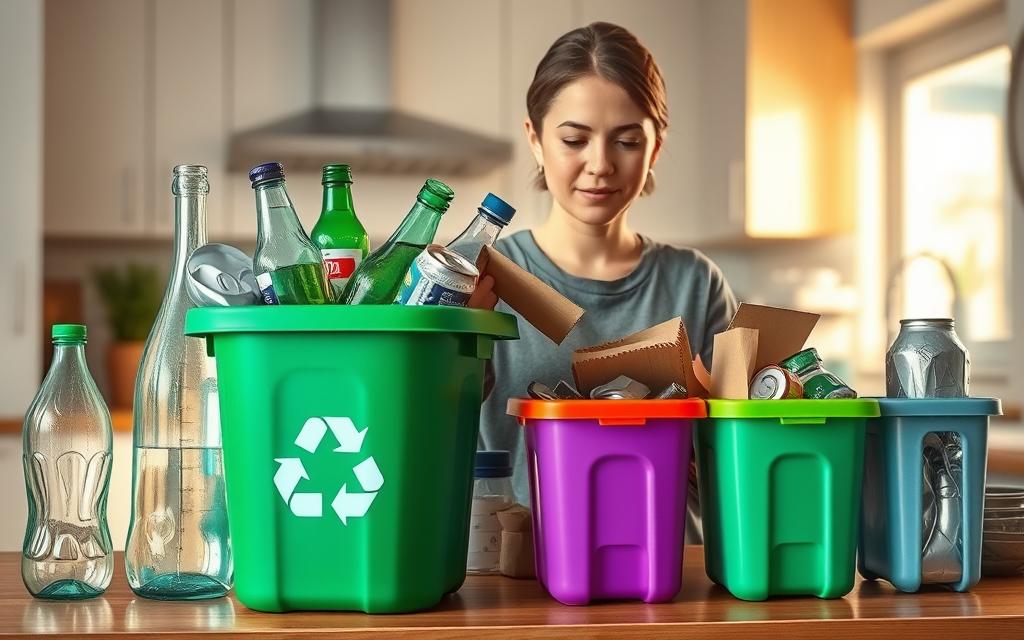
Best Practices for Curbside Recycling
Curbside recycling requires attention to detail. Use labeled bins for easy sorting and avoid bagging recyclables—keep items loose to prevent processing issues. Overfilling bins can lead to spillage, so ensure they are only filled to capacity.
Always check local guidelines for specific rules. For example, WM’s curbside programs emphasize keeping materials clean, dry, and loose. Following these practices ensures a smooth recycling process.
Recycling at Home and Work
Setting up efficient recycling systems at home and work is simple. Place recycling bins next to trash cans to encourage proper disposal. Use printable labels for clear identification and educate household members or coworkers on guidelines.
WM’s step-by-step setup guide recommends starting with labeled bins and expanding as needed. Consistent practices at home and work contribute to a cleaner environment and support sustainability efforts.
| Preparation Step | Action |
|---|---|
| Rinse Containers | Remove food residue to prevent contamination. |
| Flatten Cardboard | Save space by flattening boxes. |
| Remove Shrink Sleeves | Take off plastic bottle sleeves for easier processing. |
“Proper preparation ensures materials are recycled efficiently, reducing waste and supporting sustainability.”
By following these tips, you can make a positive impact on the environment. Proper recycling practices benefit everyone, from households to businesses, and contribute to a healthier planet.
Conclusion
Recycling has become an essential part of daily life, helping reduce waste and protect the environment. By following local guidelines, avoiding contaminants, and preparing items properly, everyone can contribute to a more sustainable future. Small actions, like rinsing containers or flattening cardboard, make a big difference when practiced collectively.
Sharing knowledge with others amplifies the impact of recycling efforts. Educating peers and communities ensures more materials are processed correctly, reducing landfill dependency. For ongoing support, explore resources like detailed recycling guides to stay informed and effective.
Together, individual efforts create a ripple effect, driving larger environmental goals. Let’s continue to prioritize sustainability and make recycling a seamless part of our routines. Every step counts toward a cleaner, healthier planet.
FAQ
What is recycling?
Recycling is the process of converting waste materials into reusable objects to reduce the consumption of raw resources and minimize environmental impact.
Why does recycling matter?
Recycling conserves natural resources, reduces landfill waste, lowers greenhouse gas emissions, and supports a sustainable future for the planet.
What are the three basic rules of recycling?
The three basic rules are: recycle clean and dry materials, avoid contamination with non-recyclables, and follow local recycling guidelines.
What are common recyclable items?
Common recyclables include paper, cardboard, aluminum cans, glass bottles, plastic containers, and metal items like food cans.
Are there special considerations for local recycling programs?
Yes, local programs may have specific rules about accepted materials, sorting requirements, and collection schedules. Always check with your municipality.
What items should not go in the recycle bin?
Avoid placing plastic bags, food waste, batteries, Styrofoam, and hazardous materials in the recycle bin as they can contaminate the process.
What are common contaminants in recycling?
Common contaminants include greasy pizza boxes, dirty food containers, broken glass, and non-recyclable plastics, which can disrupt the recycling process.
How should items be prepared for recycling?
Rinse containers, remove lids, flatten boxes, and ensure materials are clean and dry before placing them in the recycle bin.
What are best practices for curbside recycling?
Use the correct bin, follow sorting instructions, avoid overfilling, and place bins at the curb on designated collection days.
How can recycling be practiced at home and work?
Set up designated bins, educate others on proper recycling, reduce waste, and reuse items whenever possible to promote sustainability.


